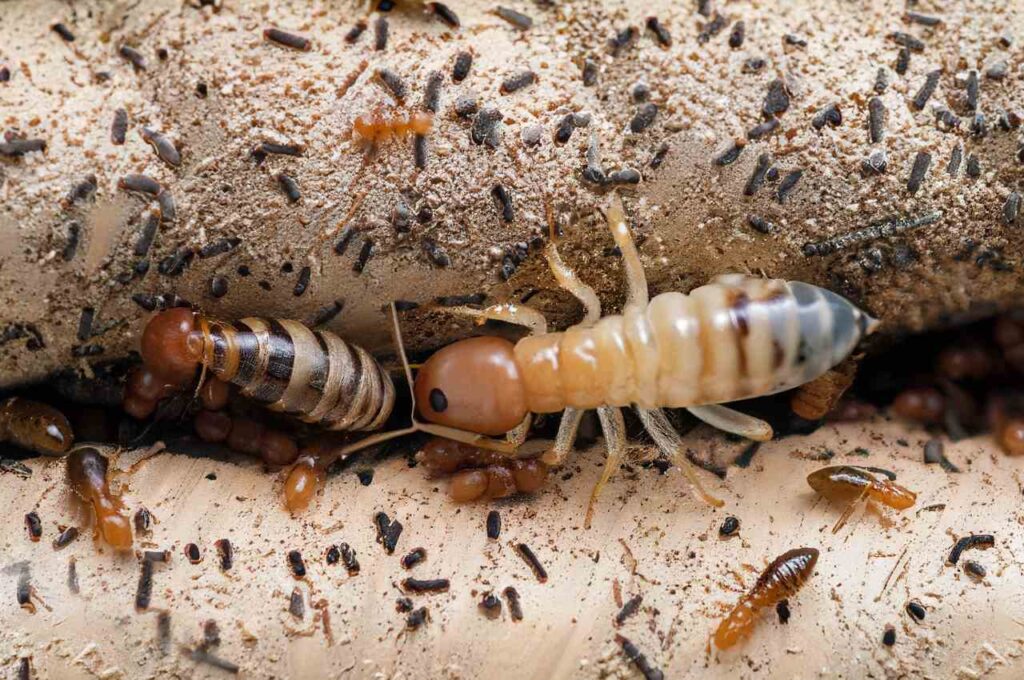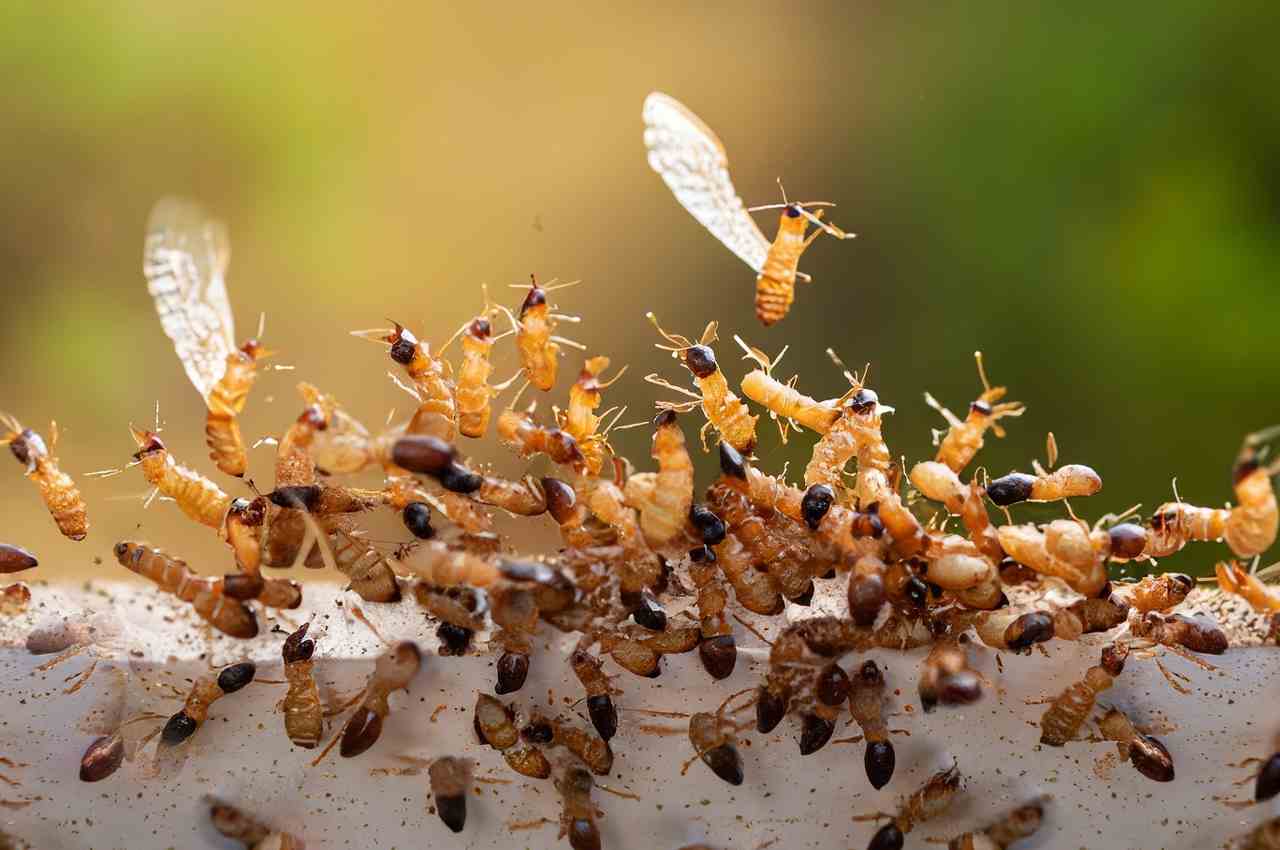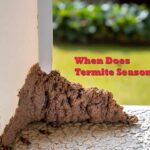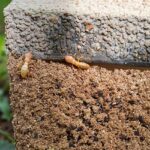Do Termites Swarm More Than Once? Understanding the Swarming Behavior and Infestation Patterns. In the spring and summer, termite swarms are frequent occurrences. Swarmers, or reproductive termites, depart a termite colony when it is ready to breed in order to find a new location to establish a new colony. The frequency of termite swarms is a topic of considerable interest. While some individuals think termites may swarm more than once, others think they only do it once.
The truth is more complicated, despite the fact that the idea of a termite swarm could make people think of a single, significant occurrence. We explore the intriguing subject, “Do termites swarm more than once,” in this investigation. Understanding the subtleties of termite behavior and the variables that affect their swarming patterns will help us better understand the difficulties these enigmatic organisms provide to both property owners and ecosystems.
Do termites swarm more than once?
In general, termites do not swarm more than once. When a termite colony is prepared for reproduction, a termite swarm is a one-time occurrence. The swarmers are the reproductive termites, also known as alates. In quest of a fresh location to establish a new colony, they depart the community.
The swarmers lose their wings and establish a new colony after they have located a new place. Until the new colony is prepared to breed, it won’t swarm again.
However, some termites may show signs of swarming more than once. If the original colony is destroyed and the swarmers are unable to locate a new place, this may occur. In this scenario, the swarmers could attempt to establish a new colony in the same area as the first one.
Types of Termites and their Swarming activity
| Termite Types | Swarming Frequency | Swarming Season | Swarm Size |
|---|---|---|---|
| Subterranean Termites | 1 major swarm per year | Spring to summer | Massive swarms with thousands to tens of thousands |
| Drywood Termites | 1-2 times per year | Spring to summer | Smaller swarms with hundreds to thousands |
| Dampwood Termites | Every 2-4 years | Spring | Smaller swarms with hundreds |
Termite Swarm Facts
| Termite Swarm Facts | Details |
|---|---|
| Time of Occurrence | Most common during the day, but can also occur at night. |
| Attraction to Light | Termite swarmers are attracted to light and are often seen close to windows or other light sources. |
| Swarm Size | Swarms of termites may be large and number in the thousands. |
| Immediate Action | It's important to get in touch with a pest control provider right once if a termite swarm is seen. |

Recognizing Termite Swarm Behavior
Termites swarm for two purposes: reproduction and spreading.
- Reproduction: A termite colony will generate swarmers once it reaches a particular size. The reproductive termites, sometimes called alates, swarm. In quest of a fresh location to establish a new colony, they depart the community.
- Population dispersal: Termites swarm to spread out their population. This is significant because it ensures the survival of the species. The termites would be more susceptible to predators and illnesses if they were all in one colony.
The winged termites that you may notice flying about in the spring and summer are called swarmers. Since they are drawn to light, windows are often where you may find them.
The swarmers will lose their wings and establish a new colony after they have located a new place. Until the new colony is prepared to breed, it won’t swarm again.
Frequency of Termite Swarms
There are two basic causes of termite swarms:
- Colony size and capacity: Termite swarmers are produced when a colony reaches a particular size. This is because the colony’s carrying capacity has been achieved and it is unable to accommodate the expanding population.
- Optimal weather conditions: Warm, humid spring and summer months are when termite swarms are most frequent. This is so that the swarmers can fly, which requires moist air.
Termite species and climate may have an impact on how often swarms occur. Termite swarms typically happen once a year, although certain species may swarm more or less often.
A colony’s swarmer count may also change. Only a few swarmers may be produced by certain colonies, whilst thousands may be produced by others. The size of the colony is often correlated with the number of swarmers.
The frequency of termite swarms is also correlated with the size of the termite colony and the termite subgroup. The most prevalent form of termite in the United States, subterranean termites, generally swarm once every year. Drywood termites, which are common in the southern US, could swarm more often, however.
| Termite Type | Frequency of Swarms |
|---|---|
| Subterranean termites | Once a year, typically in the spring or summer |
| Drywood termites | May swarm more often, typically in the fall or winter |
| Dampwood termites | Typically between 2-4 years |
The Swarming Process
The following stages may be used to separate the termite swarming process:
- Mature termites develop wings: Termites that are mature begin to produce wings as the first stage of the swarming process. When the termites reach a specific age and size, this occurs.
- Swarmers emerge from the colony: As soon as the termites have acquired wings, swarmers will begin to leave the colony. This often takes place at night or in the early morning.
- Swarmers form pairs: After that, the swarmers will couple up. The male and female termites discover one another and fly together to do this.
- Swarmers shed their wings: The swarms will shed their wings after they have paired off. This makes it easier for them to roam about and choose a new location to establish a colony.
- Swarmers mate and create a new colony: After the swarmers have lost their wings, they will mate and create a new colony. Until the new colony is prepared to breed, it won’t swarm again.
Termite species and climate may have an impact on the time and spread of termite swarm releases. Termite swarms often happen in the spring and summer, when the climate is warm and muggy. Some species, however, could swarm at different times of the year.
Factors Influencing Swarming Timing
| Factor | Effect |
|---|---|
| Subgroup | Drywood termites swarm in the late summer or early fall, dampwood termites swarm in the spring, and subterranean termites swarm in the summer. |
| Weather | Warm, humid weather increases the likelihood of termite swarms. |
| Rain | Rain may assist in loosening the soil around termite colonies, facilitating the emergence of swarmers. |
| Wind | The swarmers may be dispersed by the wind so they can locate new locations to establish colonies. |
| Indoor swarming incidents | Occasionally, termite swarms may be found inside, particularly if there is a moisture issue. |
Conclusion
In conclusion, termite swarming is a complex phenomena shaped by a variety of factors. Property owners may actively prevent termite infestations by understanding these underlying reasons. In response to the original question, termites typically only swarm once. There are few outliers, however, when termites could seem to have many swarming occurrences. Such situations could occur if the main colony is eliminated, preventing swarmers from establishing a new home. Therefore, these swarmers can try to start a new colony in the same location as the first one.
Frequently Asked Questions
Do termites engage in swarming behavior multiple times?
No, termites do not swarm repeatedly. When a termite colony is ready to reproduce, the swarmers leave to start new colonies. Swarmers lose their wings and form a new colony after finding a good spot. They won’t swarm again until their next reproductive period. Termites may swarm many times if their colony is destroyed and they struggle to find a new home. They may try to start a new colony on the old spot.
How often do termites swarm more than once within a year?
Termites only swarm once a year. When a termite colony is ready to reproduce, the reproductive termites, or swarmers, leave to start new colonies. Swarmers lose their wings and start a new colony after finding a good spot. They swarm again when the colony is ready to reproduce. Termites that swarm numerous times in a year frequently do so because the founding colony is destroyed, prompting swarmers to start again.
Is it common for termite colonies to go through multiple swarming events?
Termite populations seldom swarm many times. When a colony is ready for reproduction, reproductive termites or swarmers leave to start new colonies. After finding an appropriate place, these swarmers lose their wings and start a new colony, swarming again only when the colony is reproductive. However, termite colonies may seem to swarm many times. This might happen if the colony is destroyed, leaving swarmers without a home. They may try to start again in the same place. Termite populations seldom swarm many times owing to environmental variables like excessive humidity or warm temperatures.
Do termites swarm more than once in house?
Termites swarm once a year, but multiple swarms in a house can occur for various reasons. Swarming events can be caused by colony destruction, favorable environmental conditions like warmth and humidity, construction interference, and colony age or species. Even less swarm-prone species may swarm multiple times under certain conditions.
Do termites swarm more than once during the day?
No, termites only swarm once a day. Most termite swarmers find mates and start new colonies within a short time. Termite swarmers should be reported to a pest control company immediately to assess the infestation and take action.
Do termites swarm more than once at night?
Termites rarely swarm more than once at night. Light and warmth attract termites to swarm during the day. Swarming may occur at night in warm, humid conditions or if the termite colony is disturbed. In contrast, dampwood termites swarm at night, seeking porch lights for mating and colony expansion.
What causes termites to swarm many times?
While termites seldom swarm, various circumstances might cause them. First, swarmers may develop new colonies near the original colony if strong weather, chemical treatment, or other disturbances destroy it. Warm, humid weather may also affect termite swarming, resulting to several swarms. Construction may upset termite colonies, prompting swarmers to leave many times. Younger colonies may swarm more regularly if supplies are scarce, and different termite species may swarm differently.
Can termites from the same colony swarm in different seasons?
Same-colony termites cannot swarm in different seasons. Swarming is a unique occurrence that occurs when a termite colony is ready to reproduce, sending reproductive termites or swarmers to create new colonies. After finding a good spot, these swarmers lose their wings and start a new colony, swarming again only when it’s ready to breed. Termites may swarm more than once a year owing to colony disintegration and efforts to build a new colony, however the swarming season varies on the species. In April, subterranean termites swarm, drywood termites in late summer or autumn, and dampwood in summer.
Which termite species swarm most often?
Certain termites are more likely to swarm many times. Drywood termites, prevalent in the south, often swarm in late summer and autumn. Termites that live in damp wood like decaying logs may swarm again if circumstances are right. Subterranean termites, the most prevalent termite kind in the US, swarm yearly, although colony disruptions or ideal weather may cause more frequent swarms. It is important to note that even termite species less linked with many swarming occurrences might exhibit such behavior under certain settings, such as swarmers trying to build new colonies when their habitat is destroyed.
Does a secondary termite swarm indicate a larger infestation?
A secondary termite swarm may imply a greater infestation, although this isn’t always true. The destruction of the original colony due to harsh conditions or treatment, environmental factors like warm and humid weather, human interference like construction, and even the colony’s age or species can cause termites to swarm multiple times. Some termite species regularly swarm, such as subterranean termites annually or drywood termites more often, although secondary swarms alone cannot indicate a greater infestation.
What is the purpose of termites swarming more than once?
In some situations, termites swarm many times to interrupt their reproductive rhythms. Termites normally swarm once a year, although numerous conditions might cause repeated swarms. The destruction of the initial colony causes swarmers to seek other places if it is destroyed or treated poorly. Warm, humid weather and construction or renovation interruptions might increase swarming. Younger colonies may swarm more if supplies are scarce. If their colony is destroyed, certain termite species may swarm many times to start again.
Do environmental factors affect termite swarms?
Indeed, environmental factors greatly affect termite swarms. Warmth helps termites fly, while humidity keeps their wings wet. Subterranean termites swarm in warm, humid spring weather, although increased temperature or humidity might cause greater swarming. Temperature 70-80°F, humidity 50-70%, rainfall that softens soil surrounding colonies, and wind helping swarmers disperse for new colonies affect termite swarming frequency.
Any patterns or behaviors for termites that swarm repeatedly?
Yes, recurrent swarming termites have patterns and behaviors. If the original termite colony is destroyed, swarmers may start new colonies at the same area owing to severe circumstances or treatment. Warm, humid weather, especially spring and summer heat waves, typically leads to greater swarming. Human activity like building may disturb colony operations and increase swarming frequency. While termite colonies normally swarm when mature, younger colonies may swarm more regularly if supplies are low. Swarming behavior varies by species, with subterranean termites swarming yearly and drywood termites more often.
How can property owners differentiate between primary and secondary termite swarms?
Property owners must distinguish main and secondary termite swarms. Winged termites leave warm, humid spring or summer conditions to start new colonies in primary swarms. Year-round secondary swarms include termites that failed to find mates in the first swarm. Primary swarms have more termites, are near the ground, travel throughout the day, and fly, whereas secondary swarms crawl. These characteristics help homeowners recognize termite infestations.
Are secondary swarms as concerning as the initial primary swarm?
Secondary termite swarms indicate an active termite infestation in your home, much as main ones. These swarms, caused by the collapse of the initial colony, environmental circumstances, intervention, age, and species differences, may indicate a large termite presence. The causes of subsequent swarms emphasize the need for immediate infestation control.
Do termite colonies eventually stop swarming after a certain period of time?
Termites stop swarming after a while. When the colony is large enough, swarmer production stops. Swarming duration depends on colony size, termite species (subterranean termites swarm longer than drywood termites), environmental conditions (warm and humid weather may extend swarming), and pest control treatments.
What steps should be taken if a property experiences multiple termite swarms?
Multiple termite swarms need immediate intervention to minimize damage. Hire a pest control professional to examine for termites and propose remedies. Fix water leaks, repair cracks and holes, and examine your property for termite damage including mud tubes and frass. Quick execution of these steps may prevent termite damage to the property.
Is it possible for termites to swarm indoors more than once?
Several causes may cause termites to swarm inside several times. Swarmers may develop new termite colonies in the same area if extreme weather, treatments, or environmental circumstances kill the old colony. Warm, humid spring and summer temperatures might cause frequent swarming. Construction may disrupt colonies, increasing swarming. The termite species, colony age, and size affect the chance of several swarms. Thus, termites may swarm inside many times.
- How do termite mounds help regulate temperature? - 7 January 2024
- 10 Effective Termite Control Methods That Actually Work - 4 January 2024
- How Long Does It Take for a Termite Mound to Form? - 21 December 2023




